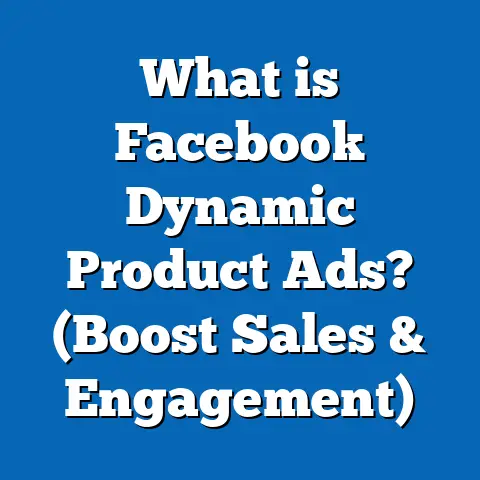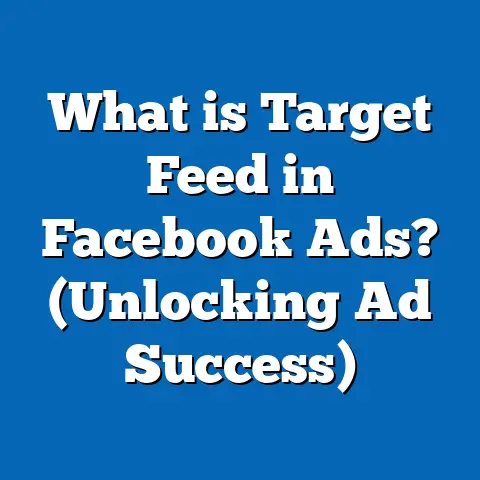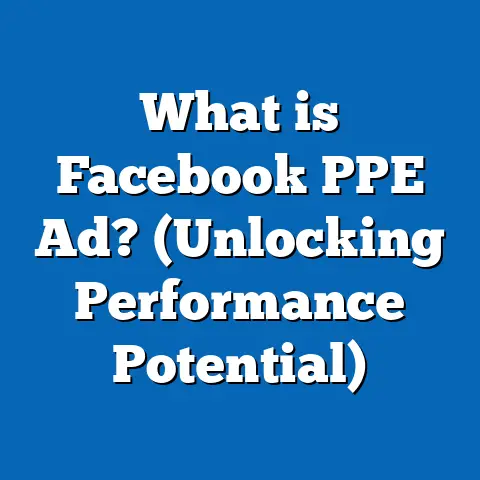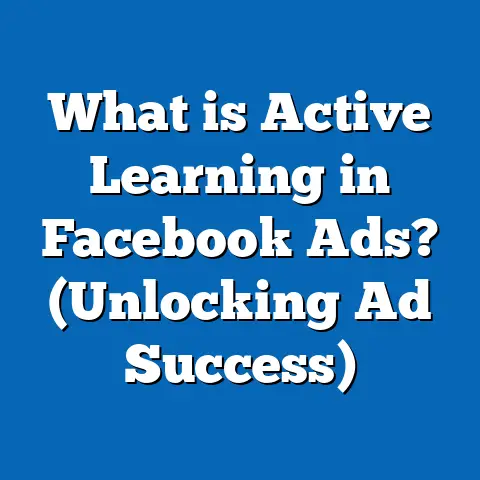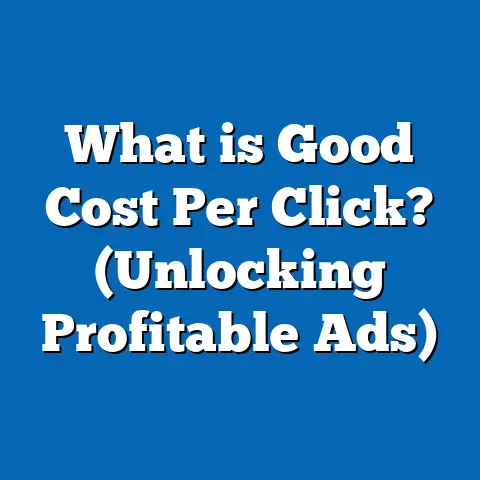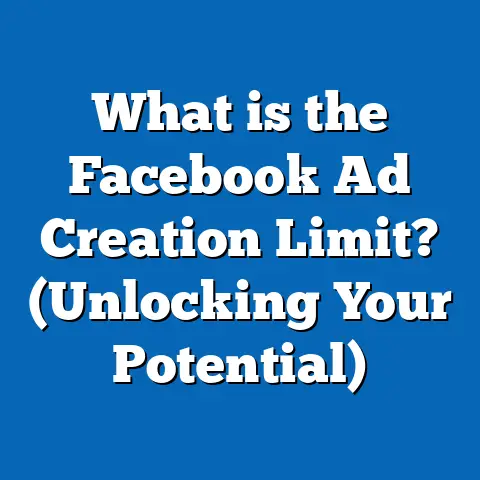What is a Link Description? (Boost Your Click-Through Rates)
Introduction: The Craftsmanship Behind Effective Link Descriptions
In the intricate craft of Facebook marketing, every detail matters. The visual appeal of an image or video, the punch of a headline, and the precision of targeting all shape the effectiveness of an ad campaign. Yet, one element that often goes unnoticed is the link description. This seemingly small piece of text can be the difference between a user scrolling past your ad or clicking through to your website.
Think of the link description as the fine brushstroke that completes a painting—it adds context, guides the viewer’s eye, and enhances overall clarity. Mastering this element is crucial because it directly influences one of the most important metrics in advertising—click-through rate (CTR). A well-crafted link description increases user confidence, sets appropriate expectations, and ultimately drives higher engagement.
Understanding Link Descriptions in Facebook Advertising
What Exactly Is a Link Description?
A link description is a short block of text appearing just below the headline in a Facebook ad. Its purpose is to provide additional information about the content users will find after clicking the link. Unlike the headline, which is usually bold and designed to grab attention quickly, the link description offers an explanation or incentive that encourages users to take action.
It complements other ad components—image or video, headline, primary text—by adding context and clarifying the offer. For example, if your headline says “Discover Our New Collection,” the link description might read “Shop stylish, eco-friendly apparel designed for comfort and durability.”
Link Description vs. Other Text Elements in Facebook Ads
| Ad Component | Purpose | Typical Length | Visibility |
|---|---|---|---|
| Primary Text | Main message above the visual | Up to 125 characters visible | Always visible |
| Headline | Bold statement below visual | Up to 40 characters | Always visible |
| Link Description | Additional info below headline | Up to 90 characters | Visible depending on placement |
The link description acts as a secondary reinforcement to the headline and is more explanatory than persuasive compared to the primary text.
The Importance of Link Descriptions: Why They Matter
Data-Driven Insights into Link Description Impact
Research consistently shows that subtle improvements in ad copy can lead to meaningful uplifts in CTR. According to WordStream (2023):
- Ads with clear and relevant link descriptions experience up to 30% higher CTR on average.
- Properly optimized link descriptions can reduce bounce rates by 15%, indicating users find what they expected.
- Campaigns that integrate dynamic link descriptions based on user segmentation see conversion lifts up to 25%.
These statistics highlight how investing time in crafting effective link descriptions yields measurable returns.
Psychological Factors at Play
- Expectation setting: Users want to know what they will get before clicking. A clear description reduces uncertainty.
- Trust building: More information signals transparency and professionalism.
- Cognitive ease: When users can quickly scan an ad and understand its value proposition, decision-making is easier.
Anatomy of an Effective Link Description: Breaking Down What Works
Clarity Above All
Your link description must be immediately understandable. Avoid ambiguous phrases or jargon that confuse users. Instead, clearly state what users will find after clicking.
Relevance to Headline & Landing Page
Consistency matters. If your headline promises “Free Shipping This Week,” your description should reinforce or expand on that promise rather than introduce unrelated information.
Brevity Is Key
Facebook truncates text depending on device and placement. Keep your descriptions within 30-90 characters to ensure most users see the full message. For reference:
- <50 characters: Safe for all placements
- 50-90 characters: Visible mostly on desktop
- 90 characters: Risk of truncation on mobile devices
Use Action-Oriented Language
Subtle verbs like “discover,” “explore,” or “find out” encourage clicks without sounding pushy. Example: “Explore top-rated running shoes for every terrain.”
Highlight Value Proposition
Focus on what makes your offer unique or beneficial. Instead of “Our products are great,” say “Durable gear designed for extreme conditions.”
Practical Examples: Strong vs Weak Link Descriptions
| Headline | Weak Link Description | Strong Link Description |
|---|---|---|
| “Summer Sale – 50% Off” | “Click here” | “Save up to 50% on all summer essentials today” |
| “Try Our SaaS Software” | “Learn more” | “Boost productivity with our easy-to-use platform” |
| “Join Our Webinar” | “Register now” | “Reserve your spot for expert insights on digital marketing” |
The strong descriptions provide clarity and motivation by explaining benefits and setting expectations.
Where Do Link Descriptions Appear? Understanding Placement & Format
Desktop vs Mobile
- On desktop news feed, link descriptions typically appear below headlines and are fully visible within character limits.
- On mobile news feed, space constraints often truncate or hide link descriptions depending on ad format.
- In right column ads, link descriptions can appear but are less prominent and often overlooked by users.
- For Stories and Reels ads, link descriptions generally do not display.
Implications for Crafting Copy
Since mobile accounts for over 94% of Facebook’s ad traffic (Statista, 2024), prioritize brevity and front-load key info in headlines and primary text while keeping descriptions concise.
How to Craft High-Performing Link Descriptions: Step-by-Step Guide
Step 1: Know Your Audience Deeply
Before writing, understand your audience’s pain points, desires, and language style. Use Facebook Audience Insights or customer research data to gather this information.
Step 2: Align With Your Visuals & Headlines
Ensure your description supports the overall message conveyed by images/videos and headlines for a cohesive experience.
Step 3: Emphasize Benefits Over Features
Focus on how your product/service improves users’ lives rather than listing features. Example: Instead of “Waterproof jacket,” say “Stay dry in any weather.”
Step 4: Incorporate Soft Calls to Action (CTA)
Use inviting language like “Explore,” “Discover,” or “Find out” rather than hard sells like “Buy now.” This approach tends to feel less aggressive and more engaging.
Step 5: Test & Iterate
A/B test multiple link description variations using Facebook’s split testing tools. Monitor CTR, CPC, and conversion metrics to identify top performers.
Advanced Techniques: Using Technology & Psychology in Link Descriptions
Dynamic Text Optimization with Facebook Tools
Facebook’s Dynamic Creative Ads allow automatic testing of multiple link description variants, optimizing delivery based on real-time performance data. This reduces guesswork and improves efficiency.
Emotional Triggers in Copywriting
Incorporate emotional appeal subtly within your description:
- Use words that evoke safety (“Secure your data now”)
- Inspire aspiration (“Join thousands achieving success”)
- Address fear of missing out (“Limited spots available”)
Research indicates ads with emotional content can increase engagement by up to 23% (Nielsen Consumer Neuroscience).
Personalization & Localization
Tailor descriptions based on user demographics or geography:
- Example: “Exclusive offer for New York residents”
- Example: “Perfect for humid climates”
Personalized copy boosts CTR by over 20% (HubSpot, 2023).
Common Pitfalls & How to Avoid Them
| Mistake | Impact | How to Fix |
|---|---|---|
| Vague or generic descriptions | Low engagement; unclear value | Be specific about benefits and what users should expect |
| Keyword stuffing | Poor readability; may appear spammy | Write naturally; focus on clarity over keyword density |
| Ignoring mobile formatting | Truncated messages; loss of impact | Keep descriptions short; test across devices |
| Inconsistent messaging | Confuses users; lowers trust | Align description with headline & landing page |
| No testing | Missed opportunities for optimization | Run A/B tests regularly; use data to refine copy |
Measuring Success: Key Metrics Related to Link Descriptions
Click-Through Rate (CTR)
An increase in CTR after updating link descriptions indicates improved ad relevance and appeal.
Cost Per Click (CPC)
Lower CPC suggests your ad attracts more qualified clicks at a lower cost due to better messaging clarity.
Conversion Rate
Tracking how many clicks turn into sales or leads shows if your description sets accurate expectations.
Bounce Rate & Time on Page
A reduction in bounce rate or increased session duration means users found what was promised in the description.
Case Studies: Real-World Examples of Optimized Link Descriptions
Case Study 1: SaaS Company Improves Webinar Signups by 40%
A SaaS company running webinar ads initially used generic descriptions like “Register now.” After rewriting descriptions to emphasize benefits (“Learn how to double your sales pipeline with our CRM”), CTR increased by 40%, with signups rising proportionally.
Case Study 2: Retail Brand Boosts Sales with Clear Value Proposition
An online retailer selling eco-friendly products changed their link descriptions from vague phrases (“Shop now”) to benefit-driven ones (“Sustainable goods crafted from recycled materials”). They saw a 25% increase in CTR and a 12% decrease in CPC.
Comparison with Other Advertising Platforms’ Use of Link Descriptions
Facebook’s link description feature sits uniquely among social platforms:
| Platform | Description Role | Character Limit | Special Features |
|---|---|---|---|
| Secondary ad text under headline | ~30-90 characters | Dynamic text options; multi-format | |
| Accompanies shared links/posts | Up to 150 characters | Professional tone; targeted B2B ads | |
| Uses tweet text; no dedicated description | N/A | Twitter Cards add preview info | |
| Google Ads | Structured description lines | 90 chars per line | Extensions allow more details |
Facebook allows more creative flexibility with dynamic options helping marketers tailor messages effectively.
Tips for Integrating Link Descriptions into Overall Ad Strategy
- Complement Your Brand Voice: Match tone and style with your broader marketing communications.
- Use Analytics Tools: Leverage Facebook Ads Manager reports to track performance.
- Coordinate With Landing Pages: Ensure messaging consistency between ad copy and landing page content.
- Stay Updated: Facebook regularly updates ad formats—adapt your copy accordingly.
- Leverage User Feedback: Look at comments and inquiries on ads for phrasing insights.
Emerging Trends & Future Outlook for Link Descriptions
AI-Powered Copywriting Assistance
AI tools increasingly assist marketers in generating optimized link descriptions quickly based on audience insights and performance data.
Interactive & Rich Media Ads
As video and interactive formats grow, link descriptions may evolve to integrate clickable overlays or dynamic content tied directly to user actions.
Increased Focus on Personalization
With advancements in machine learning, hyper-personalized advertising messages—including link descriptions—will become routine to maximize relevance.
Summary & Next Steps for Marketers and Business Owners
Recap of Key Points:
- The link description is a powerful but underused element that enhances clarity and drives clicks.
- Data supports that optimized descriptions can boost CTR by up to 30%.
- Keep descriptions clear, concise, relevant, and aligned with headlines/landing pages.
- Use dynamic testing tools and emotional triggers for advanced optimization.
- Regularly track performance metrics including CTR, CPC, conversion rates, and bounce rates.
- Avoid common mistakes like vagueness and keyword stuffing.
- Tailor descriptions for mobile devices and personalize where possible.
- Stay informed about platform changes and emerging trends.
Action Plan:
- Audit existing Facebook ads for quality of link descriptions.
- Rewrite weak or missing descriptions using best practices outlined here.
- Set up A/B tests to compare different versions.
- Analyze results regularly for continuous improvement.
- Experiment with advanced tactics like dynamic creative optimization.
- Align messaging across all marketing channels for consistent brand experience.
Mastering link descriptions is not just about filling a text box—it’s about refining your advertising craft to communicate value clearly and motivate action effectively on one of the world’s largest digital marketing platforms.
If you want assistance creating custom link descriptions tailored for your campaigns or need help interpreting your ad performance data, I’m here to help!
Would you like me to prepare downloadable templates or sample test plans for optimizing your Facebook ads?

